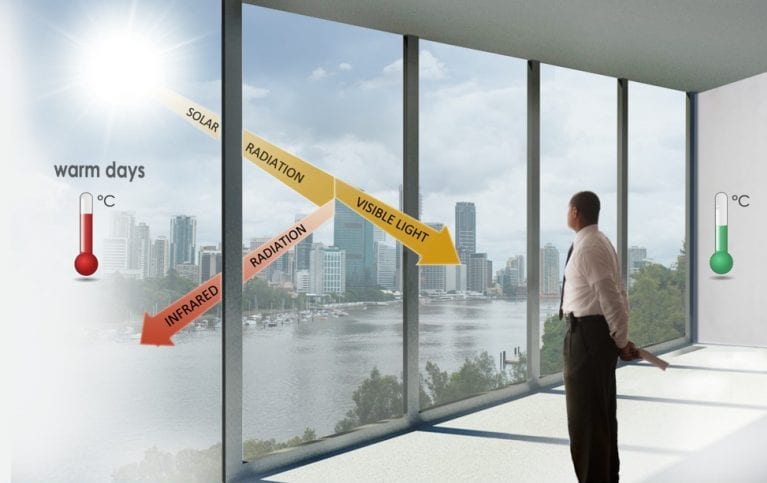
Schematic diagram of an ideal smart window reflecting infrared radiations in warm days (top), and allowing it to enter in cold days (bottom), while remaining transparent in visible region in both climate conditions.
The absorption of sunlight by building materials and passage of IR through transparent surfaces such as windows is responsible for much of the interior overheating of office rooms, automobile interiors, greenhouses, and other similar spaces, and it is expected that the use of artificial cooling and heating systems will only increase with the continued influence of global climate change.
Windows are vital elements in the built environment, affecting both heating and cooling and artificial lighting requirements. Several windows which absorb or scatter solar energy have been developed, to save energy on heating and cooling, but by impacting visible light, they also block inside/outside visual contact which may have negative impact on human health and productivity.
In their recent review, Dr. Michael Debije and colleagues from the Eindhoven University of Technology in the Netherlands, discuss next generation energy-control windows based on organic materials. These smart windows can change their properties by reflecting or transmitting excess sunlight in such a way that comfortable indoor temperatures can be maintained throughout the year. The windows maintain transparency in the visible region so that additional energy is not required to retain natural illumination.
A number of designs are discussed to fabricate windows which can alter infrared transmission properties triggered by external stimuli, including electric fields, temperature, and incident light intensity. Simulation and experimental studies are discussed that demonstrate the potential impact of these windows on indoor temperature, lighting conditions, and energy savings in different climate conditions across the globe.
The authors have also discussed possible future technologies that could be developed. For example, windows which are visibly transparent and able to simultaneously generate energy from otherwise unused wavelengths, bistable windows which only need energy to switch between reflective and transmissive states, and responsive coatings for retrofitting existing windows.














